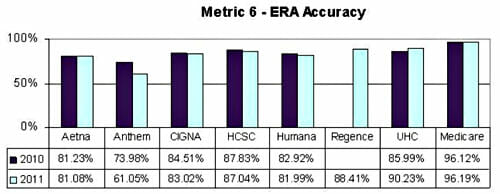Well, it turns out that the laws of supply and demand do indeed apply in the health care field. Obamacare and before it Romneycare combine government subsidies of demand with cost controls mainly consisting of price caps on suppliers. The results are exactly what any college student could predict after even one week of microeconomics 101: shortages.
First, from the WSJ
A new survey released yesterday by the Massachusetts Medical Society reveals that fewer than half of the state's primary care practices are accepting new patients, down from 70% in 2007, before former Governor Mitt Romney's health-care plan came online. The average wait time for a routine checkup with an internist is 48 days. It takes 43 days to secure an appointment with a gastroenterologist for chronic heartburn, up from 36 last year, and 41 days to see an OB/GYN, up from 34 last year....
Massachusetts health regulators also estimate that emergency room visits jumped 9% between 2004 and 2008, in part due to the lack of routine access to providers. The Romney-Obama theory was that if everyone is insured by the government, costs would fall by squeezing out uncompensated care. Yet emergency medicine accounts for only 2% of all national health spending.
The emergency room data is fascinating, as crowded emergency rooms supposedly overwhelmed by the uninsured was such an important image in the campaign to pass Obamacare. More on this from Q&O:
Hospital emergency rooms, the theory goes, get overcrowded because people without health insurance have no place else to go.
But that’s not the view of the doctors who staff those emergency departments.
The real problem, according to a new survey from the American College of Emergency Physicians,isn’t caused by people who don’t have insurance — it’s caused by people who do, but still can’t find a doctor to treat them.
A full 97 percent of ER doctors who responded to the ACEP survey said they treated patients "daily" who have Medicaid (the federal-state health plan for the low-income), but who can’t find a doctors who will accept their insurance…."The results are significant," said ACEP President Sandra Schneider in prepared comments. "They confirm what we are witnessing in Massachusetts — that visits to emergency rooms are going to increase across the country, despite the advent of health care reform, and that health insurance coverage does not guarantee access to medical care."
As I have been saying for a long time, the Obama health care nuts do not have any secret, magical idea or plan for cutting health care costs. In fact, as I have written here and here, we should expect Federalization to exacerbate the bad information and incentives that make health care more expensive. The only idea they have, in fact, is the only one that anyone ever has in government for this kind of thing -- price controls
Over the weekend, The Washington Postpublished a Q&A-style explainer on the Independent Payment Advisory Board—the panel of federal health care technocrats charged with keeping down spending growth on Medicare.
The details are complicated, but the gist is simple: If spending on Medicare is projected to grow beyond certain yearly targets, then it’s IPAB to the rescue: The 15-member panel appointed by the president has to come up with a package of cuts that will hold Medicare’s growth in check. If Congress want to override that package, it only has two options: Vote to pass a different but equally large package of cuts or kill the package entirely with a three-fifths supermajority in the Senate.
The Post lays out the basic framework above. But what it doesn’t explain in any detail is exactly how those cuts will be achieved. And that, of course, is where the difficulty begins: Here’s how The Wall Street Journal’s editorial board explained it last month: “Since the board is not allowed by law to restrict treatments, ask seniors to pay more, or raise taxes or the retirement age, it can mean only one thing: arbitrarily paying less for the services seniors receive, via fiat pricing.” Medicare already centrally sets the prices it pays for the services of doctors and hospitals. Given the board's limitations, the most likely cuts we’ll see from IPAB, then, will be arbitrary, quality-blind reductions in these payments (though hospitals will be exempt from cuts for the first couple years).
We know what happens next: Providers stop taking on new Medicare patients, or drop out of the system entirely. In Medicaid, which pays far lower rates than Medicare (which pays somewhat lower rates than private insurance), this is already common: As one emergency physician recently told The New York Times, “Having a Medicaid card in no way assures access to care.” If IPAB cuts Medicare provider payments down to the bone, it could end up transforming Medicare into a seniors’-version of Medicaid.



